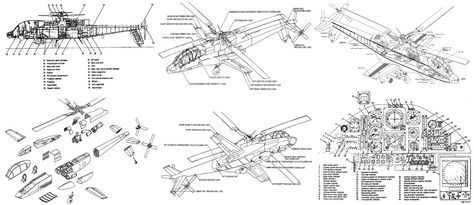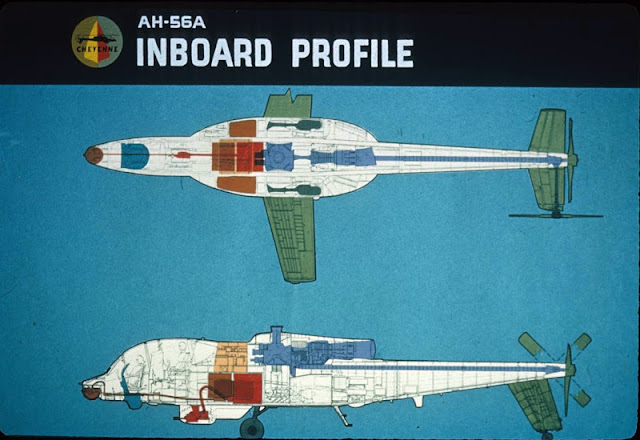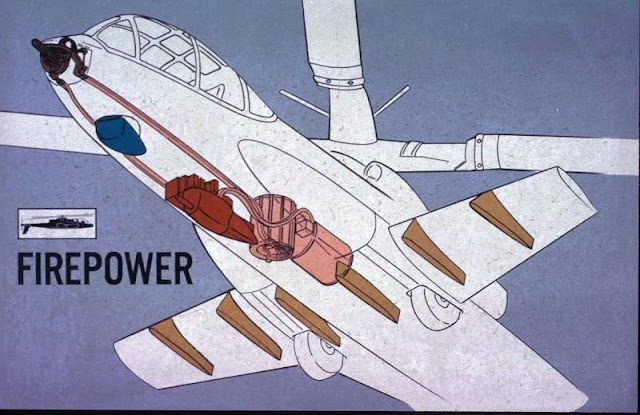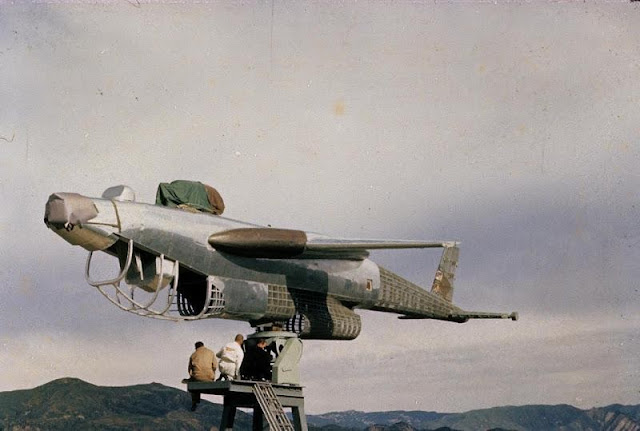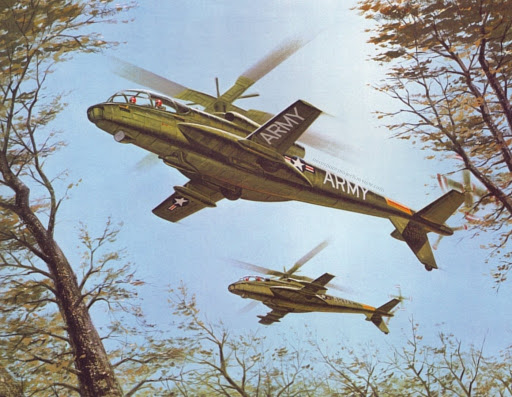La società Leonardo SpA e la difesa navale
La multinazionale Leonardo ha presentato cinque sistemi navali per la Middle Eastern Virtual Conference Expo; a causa della pandemia COVID-19 ha reso disponibile un video di un'ora per i media ed i tecnici del settore.
L'azienda ha altresì allestito uno stand virtuale con cinque sistemi d'arma navali mostrati e descritti in dettaglio:
- Sistemi di difesa anti-siluro Leonardo (schiera trainata, esca jammer)
- Mini siluro Black Scorpion
- Cannoni navali Marlin 40 mm “Marlin 40”
- Cannone navale 76/62 Sovraponte, 76 mm (3 pollici)
- Cannone navale 127/64 Vulcano (5 pollici).
Sistemi di difesa anti-siluro Leonardo “Anti-Torpedo Defense System”
Il Leonardo Anti-Torpedo Defense System può funzionare in modalità completamente automatica, oppure in modalità manuale con un operatore in loop. Il sistema comprende un sottosistema di avvertimento (un sistema sonar trainato a poppa soprannominato "Black Snake” con un pannello touchscreen e un laptop per i controlli) e il sottosistema Reaction che lancia contromisure costituite da due jammer e due esche per siluro in arrivo. Le due esche fungono da “imitazione degli obiettivi della nave” mentre la nave reale intraprende un'azione evasiva coperta dal rumore acustico prodotto dai disturbatori subacquei lanciati. L'intento è che il siluro nemico attacchi uno o due esche o venga confuso dal rumore del jammer e perda l'aggancio della nave da guerra con equipaggio. Leonardo ha dotato l'intero sistema sia leggero che compatto e può adattarsi a quasi tutte le navi grandi, piccole, logistiche o navali come navi da guerra, navi logistiche, trasporto di truppe, dragamine, mezzi di supporto e navi porta-container.
Il sonar passivo trainato lungo 6 km (3,72 miglia) funziona estendendo uno scivolo cilindrico dalla poppa della nave utilizzando un pannello di controllo collegato ad un ampio touchscreen per la gestione del sistema. L'unità di elaborazione è collegata al sistema di gestione del software che controlla i dati dell'array rimorchiato dalla nave. Il sistema Towed Array è sia dispiegabile che recuperabile e può funzionare fino a 80 KTS nel mare forza 5. Alla fine dell'array trainato si trova la boa del sonar munito di antenne lunghe quattro metri che trasformano i segnali analogici ricevuti in segnali digitali per l'elaborazione a bordo.
Una volta rilevato un siluro nemico, il sottosistema di reazione entra in azione controllando un lanciatore pneumatico in cui la pressione può essere regolata per lanciare le esche anti-siluro a distanze specifiche dalla nave.
Il Mobile Jammer Target Emulator
L’esca anti-siluro MJTE ha un diametro di 5 pollici e una lunghezza di 1,3 metri ed entra in acqua ad una distanza prestabilita regolata dalla pressione del lanciatore pneumatico. L’esca MJTE può agire sia come jammer che come esca, quindi funziona come due sistemi in uno. Una volta che il jammer-esca entra in acqua, stacca l'alloggiamento e il motore di compressione inizia a generare un rumore di inceppamento. Le esche MJTE sono recuperabili e possono essere lanciate da qualsiasi lanciatore Air-to-Air Warfare (AAW) utilizzando un contenitore pirotecnico.
IL LANCIARAZZI ODLS20
Leonardo ha promosso il suo lanciarazzi ODLS20 con otto tubi da 130 mm per Anti-Submarine Warfare (ASW) e AAW, o i suoi lanciatori trapezoidali B529 / 8 (i lanciatori B529 / 8 sono più compatti per navi più piccole). Questi due tipi di lanciatori sono fissi a babordo e a tribordo per la protezione della nave dai siluri.
IL LANCIATORE LEGGERO B538
Per navi molto piccole, Leonardo ha promosso il suo lanciatore leggero B538 composto da un solo tubo che può essere organizzato in gruppi di tre o sei tubi in un arco rivolto verso l'esterno per la massima copertura.
IL Mini-siluro Black Scorpion
Leonardo ha notato che le operazioni Anti-Submarine Warfare (ASW) stanno passando dall'oceano aperto "Blue Water" alle zone costiere o litorali e quindi ha progettato e realizzato il siluro leggero Black Scorpion per acque poco profonde. Il Black Scorpion è pubblicizzato per essere imbarcato su navi di superficie senza pilota (USV), veicoli per incursori SEAL (SDV), motovedette, mezzi di attacco rapido, elicotteri / droni, veicoli aerei senza pilota (UAV) e navi sottomarine senza pilota (UUV). Il Black Scorpion può anche essere alloggiato all'interno di un Sonobuoy Dispenser di taglia A e lasciato cadere da elicotteri ASW.
Questo mini siluro è attualmente in fase di test di qualificazione con alcuni contratti futuri in scadenza. Il presentatore di Leonardo ha sottolineato che le qualifiche sono adatte per un mini siluro leggero, e quindi i requisiti del Black Scorpion sono più indulgenti rispetto ai siluri più pesanti e più grandi come il Black Arrow.
Il mini-siluro leggero Black Scorpion ha un diametro di cinque pollici ed una lunghezza di 1.100 mm, pesa meno di 20 chilogrammi e utilizza una batteria termica. La detonazione della testata è causata dall'impatto con il bersaglio, o da un fusibile a ritardo o da una batteria di scarica dopo il lancio. Si tratta di un siluro leggero in miniatura e si comporta come tale. Pertanto, l'utente non deve aspettarsi la portata, le prestazioni e le caratteristiche di un siluro leggero, medio o pesante comparabile; il Black Scorpion, con il suo diametro di cinque pollici, ha le stesse dimensioni delle contromisure anti-sottomarino di Leonardo.
Il Black Scorpion può anche essere utilizzato come siluro anti-siluro hard-kill o come un siluro ASW; comunque, Leonardo consiglia di acquistare siluri leggeri, medi o pesanti invece per l'utilizzo di navi di grandi dimensioni e sottomarini ASW.
Inoltre, il Black Scorpion può essere usato dai Dry Combat Submersibles (DCS) e dai SEAL Delivery Vehicles (SDV); comunque, l'SDV avrebbe bisogno dell’utilizzo di un tubo lanciasiluri interno che corrisponda alle dimensioni del siluro in miniatura; il Black Scorpion è già stato installato su di una nave lunga 10 metri, quindi dovrebbe essere tecnicamente possibile inserirsi all'interno di un SDV e DCS. Fino a dodici Black Scorpions possono essere installati su di una unità da 250 tonnellate; un midget può trasportare sei siluri: tre a babordo e tre a tribordo.
Il mini-siluro Black Scorpion non è stato ancora testato sugli UAV, ma un tale concetto è sicuramente fattibile: uno studio condotto da Leonardo ha identificato l'UAV che può essere utilizzato per montare e lanciare il Black Scorpion.
IL CANNONE IMBARCATO Naval Gun System - Marlin 40
Il sistema autonomo di cannoni navali Marlin 40mm, o "Marlin 40", può essere installato in modalità sovraponte o nello scafo, per l'utilizzo contro imbarcazioni da attacco rapido, droni ed elicotteri e non richiede licenza di esportazione “ITAR (International Traffic in Arms Regulations)”.
Il Marlin 40 ha una cadenza di fuoco selettiva di uno, 100 o 300 colpi per tiro con 72 colpi pronti per il fuoco disponibili in torretta. Il caricatore è Dual-Feed e può ospitare colpi programmabili, anche con colpi da 40/70. Colpi aggiuntivi all'esterno della torretta possono essere alloggiati se un caricatore penetra nel ponte e nello scafo; tale caricatore sottocoperta consentirebbe il carico e lo scarico di proiettili extra da 40 mm.
Il Marlin 40 può avere un sistema di controllo del fuoco remoto indipendente situato sulla plancia della nave, o una direzione elettro-ottica con una torretta munita del sistema di puntamento radar montati sulla parte superiore della torretta.
Cannone navale da 76/62 Sovraponte
Il cannone navale Leonardo 76/62 ha un montaggio di penetrazione del ponte / scafo con i seguenti parametri di prestazione:
Rateo di fuoco: 120 colpi al minuto con 76 colpi pronti al fuoco.
Gittata con proiettili convenzionali: 15-20KM (da 9,3 a 12,4 miglia), VULCANO 27KM (16,7 miglia) (balistico) a 40KM (24,8 miglia) (40 KM guidati per colpi a lungo raggio per supporto anti-superficie). Il cannone da 76/62 accetta anche proiettili da tre pollici con fusibili programmabili.
Elevazione da -15 a più 85°.
La precisione è di 0,5 m di raggio quando si spara da una posizione ferma.
Un kit multi-alimentazione sotto la torretta e che penetra nello scafo consente la selezione di più colpi dal caricatore, indipendentemente dalla posizione del proiettile nel caricatore. Una gru robotica rotante per il caricamento dei proiettili si sposta attraverso i caricatori e seleziona i colpi da caricare nell’arma. Il design dei portariviste e la gru robotizzata per il caricamento dei proiettili consentono all'operatore di vedere il tipo di colpi verticali quando vengono immagazzinati e caricati nel cannone.
Leonardo ha progettato il kit STRALES che utilizza un radar di guida alloggiato davanti alla torretta sotto una copertura ribaltabile per guidare e far volare effettivamente i proiettili DART Fin Stabilised Discarding Sabot (FSDS) verso l'intercettazione di bersagli aerei, missilistici o di superficie. Utilizzando le alette canard del DART per manovrare, i proiettili DART sono guidati dal radar, sono molto più efficaci e con una grande precisione; hanno anche una gittata maggiore rispetto a un proiettile standard da 76 mm. La distanza minima ottimale di un DART è di 4-8 metri e la distanza di sicurezza è superiore a 100 metri dopo lo sparo, allo scopo di evitare danni da schegge.
Il kit 76/62 STRALES consente ai proiettili di avere una spoletta a microonde di prossimità per la detonazione di una testata di tungsteno all'interno di un rivestimento segmentato per formare schegge esplosive entro 4-8 m metri da un bersaglio aereo o di superficie. Un video del lancio di prova di Leonardo ha effettivamente mostrato tre colpi di DART FSDS che ondeggiavano e si intrecciavano per intercettare e distruggere in modo obliquo un drone-bersaglio; i proiettili non guidati convenzionali vengono invece sparati in linea retta sul bersaglio ostile.
Il radar STRALES consente di risparmiare munizioni al cannone da 76 mm utilizzando i proiettili FSDS DART a radiofrequenza radarguidati; il DART può essere utilizzato contro attacchi missilistici, di superficie o droni. La portata stimata dei vari colpi DART è di circa 6 Km, contro le minacce volanti (in particolare missili) e di 8 Km, contro minacce di superficie.
Il radar NA30S MK2 è indipendente dalla torretta e può controllare fino a tre cannoni utilizzando onde radio in banda X e Ka e sensori ottici. La banda X viene utilizzata per il rilevamento, l'acquisizione e il tracciamento a medio e lungo raggio, mentre la banda Ka è per il rilevamento ravvicinato a bassa quota e la guida del DART FSDS da 76 mm. Con il radar NA30S MK2 installato, il kit di guida radar in torretta non è più necessario.
I proiettili guidati a raggio esteso VULCANO utilizzano un GPS e un'unità di guida inerziale. Al momento dello sparo, il proiettile VULCANO segue un percorso balistico verso l'alto, quindi un percorso di planata di correzione della rotta e quindi un percorso terminale verso il bersaglio in basso. Il proiettile GPS VULCANO ha un sensore di radiofrequenza per ricevere la guida per la correzione della rotta.
Il proiettile guidato VULCANO 76 mm è in fase di test di qualificazione con completamento previsto alla fine del 2020, inizio del 2021. I contratti dovrebbero essere completati alla fine del 2023 e oltre.
Cannone imbarcato da 127/64 VULCANO
Il cannone navale medio da 127/64 di Leonardo ha una canna raffreddata ad acqua di mare ed un alloggiamento della torretta invisibile a faccia piatta angolata. Il rateo di fuoco è di 32 colpi al minuto con 56 colpi pronti al fuoco e una precisione radiante di 0,5 m quando la nave è ferma. La gittata dei proiettili da 127/64 è di 23KM (14,2 miglia) con colpi convenzionali, o 60KM (37,2 miglia) con colpi balistici VULCANO e 85KM (52,81 miglia) con colpi VULCANO a correzione di rotta guidati; alcuni speciali proiettili VULCANO a razzo potrebbero estendere la portata oltre i 100 km (62,1 miglia). L'elevazione leggera della canna da 127/64 è compresa tra –12 e 70 gradi e il suo peso a secco è di 36,3 tonnellate (33.000 kg) senza munizioni caricate. Il caricatore della torretta del 127/64 penetra da uno a due ponti nello scafo. Il 127/64 ha quattro tamburi rotanti dei caricatori nello scafo che consentono di ricaricare e sostituire i proiettili da cinque pollici in tre dei caricatori mentre un caricatore viene utilizzato per caricare e sparare. Il ciclo di vita utile previsto da Leonardo è superiore ai 25 anni.
Il 127/64 è già pienamente qualificato e testato con il VULCANO da 127mm. Anche una variante da 155 mm (6 pollici) è stata qualificata da Leonardo, a seguito di alcuni test e dimostrazioni condotti in collaborazione con la società BAE Systems.
ENGLISH
Leonardo SpA and naval defence
The multinational company Leonardo presented five naval systems for the Middle Eastern Virtual Conference Expo; due to the pandemic COVID-19 made available a one-hour video for the media and technicians.
The company also set up a virtual stand with five naval weapon systems shown and described in detail:
- Leonardo anti-silide defence systems (trailed array, jammer bait)
- Mini torpedo Black Scorpion
- "Marlin 40 mm" Naval Guns
- 76/62 Overhead, 76 mm (3 inches)
- Naval Gun 127/64 Vulcan (5 inches).
Leonardo "Anti-Torpedo Defense System" Torpedo Defence Systems
The Leonardo Anti-Torpedo Defense System can operate in fully automatic mode, or in manual mode with a looped operator. The system includes a warning subsystem (a stern trailed sonar system nicknamed "Black Snake" with a touchscreen panel and a laptop for controls) and the Reaction subsystem that launches countermeasures consisting of two jammers and two incoming torpedo baits. The two decoys act as an "imitation of the ship's objectives" while the real ship undertakes an evasive action covered by the acoustic noise produced by the underwater jammers launched. The intent is for the enemy torpedo to attack one or two decoys or be confused by the jammer's noise and lose engagement of the manned warship. Leonardo has equipped the entire system both light and compact and can adapt to almost any large, small, logistical or naval ship such as warships, logistics ships, troop transport, minesweepers, support vessels and container ships.
The 6 km (3.72 mile) passive towed sonar operates by extending a cylindrical chute from the stern of the ship using a control panel connected to a large touchscreen for system management. The processing unit is connected to the software management system which controls the data of the array towed by the ship. The Towed Array system is both deployable and recoverable and can operate up to 80 KTS in sea force 5. At the end of the towed array is the sonar buoy fitted with four metre long antennas that transform the received analogue signals into digital signals for on-board processing.
Once an enemy torpedo is detected, the reaction subsystem enters into action by controlling a pneumatic launcher in which the pressure can be adjusted to launch the anti-silide baits at specific distances from the ship.
The Mobile Jammer Target Emulator
The MJTE anti-silide bait has a diameter of 5 inches and a length of 1.3 metres and enters the water at a predetermined distance regulated by the pressure of the pneumatic launcher. The MJTE bait can act both as a jammer and bait, so it works as two systems in one. Once the jammer-bait enters the water, it detaches the housing and the compression motor starts to generate a jamming noise. MJTE baits are retrievable and can be launched from any Air-to-Air Warfare (AAW) launcher using a pyrotechnic container.
THE ODLS20 ROCKET LAUNCHER
Leonardo promoted his ODLS20 rocket launcher with eight 130 mm tubes for Anti-Submarine Warfare (ASW) and AAW, or his B529 / 8 trapezoidal launchers (B529 / 8 launchers are more compact for smaller ships). These two types of launchers are fixed to port and starboard to protect the ship from torpedoes.
THE LIGHT LAUNCHER B538
For very small ships, Leonardo promoted his B538 light launcher consisting of a single tube that can be arranged in groups of three or six tubes in an outward-facing arch for maximum coverage.
The Black Scorpion Mini-silide
Leonardo noted that Anti-Submarine Warfare (ASW) operations are moving from the open ocean "Blue Water" to coastal or littoral areas and therefore designed and built the Black Scorpion light torpedo for shallow water. The Black Scorpion is advertised to be boarded on unmanned surface ships (USVs), SEAL raiders (SDVs), patrol boats, rapid attack vehicles, helicopters / drones, unmanned aerial vehicles (UAVs) and unmanned submarine ships (UUVs). The Black Scorpion can also be housed inside an A-size Sonobuoy Dispenser and dropped by ASW helicopters.
This mini torpedo is currently undergoing qualification testing with some future contracts expiring. Leonardo's presenter pointed out that the qualifications are suitable for a lightweight mini torpedo, and therefore the requirements of the Black Scorpion are more lenient than for heavier and larger torpedoes such as the Black Arrow.
The lightweight Black Scorpion miniature torpedo has a diameter of five inches and a length of 1,100 mm, weighs less than 20 kilograms and uses a thermal battery. The detonation of the warhead is caused by impact with the target, either by a delayed fuse or by a discharge battery after launch. It is a lightweight miniature torpedo and behaves as such. Therefore, the user should not expect the range, performance and characteristics of a comparable light, medium or heavy torpedo; the Black Scorpion, with its five-inch diameter, is the same size as Leonardo's anti-submarine countermeasures.
The Black Scorpion can also be used as a hard-kill anti-silide torpedo or as an ASW torpedo; however, Leonardo recommends the purchase of light, medium or heavy torpedoes instead for the use of large ships and ASW submarines.
Furthermore, the Black Scorpion can be used by Dry Combat Submersibles (DCS) and SEAL Delivery Vehicles (SDV); however, the SDV would need the use of an internal torpedo tube matching the size of the miniature torpedo; the Black Scorpion has already been installed on a 10 metre long ship, so it should be technically possible to fit inside an SDV and DCS. Up to twelve Black Scorpions can be installed on a 250 ton unit; one midget can carry six torpedoes: three port and three starboard.
The Black Scorpion mini torpedo has not yet been tested on UAVs, but such a concept is certainly feasible: a study conducted by Leonardo has identified the UAV that can be used to mount and launch the Black Scorpion.
THE CANNON BOATED Naval Gun System - Marlin 40
The stand-alone Marlin 40mm naval gun system, or "Marlin 40", can be installed in overdeck or hull mode, for use against rapid attack boats, drones and helicopters and does not require an "ITAR (International Traffic in Arms Regulations)" export licence.
The Marlin 40 has a selective rate of fire of one, 100 or 300 rounds per shot with 72 ready to fire shots available in the turret. The magazine is Dual-Feed and can accommodate programmable shots, even with 40/70 rounds. Additional shots outside the turret can be accommodated if a magazine penetrates the deck and the hull; this magazine below deck would allow the loading and unloading of extra 40 mm bullets.
The Marlin 40 may have an independent remote fire control system located on the ship's bridge, or an electro-optical direction with a turret equipped with a radar sighting system mounted on top of the turret.
Ship's 76/62 Overhead Cannon
The Leonardo 76/62 naval cannon has a deck/hull penetration mount with the following performance parameters:
Rate of fire: 120 rounds per minute with 76 rounds ready to fire.
Range with conventional projectiles: 15-20KM (9.3 to 12.4 miles), VULCANO 27KM (16.7 miles) (ballistic) to 40KM (24.8 miles) (40 KM guided for long-range shots for anti-surface support). The 76/62 cannon also accepts three-inch bullets with programmable fuses.
Elevation from -15 to plus 85°.
Accuracy is 0.5 m radius when fired from a stationary position.
A multi-power kit under the turret and penetrating the hull allows multiple shots to be selected from the magazine, regardless of the position of the bullet in the magazine. A rotating robotic crane for loading bullets moves through the magazines and selects the shots to be loaded into the weapon. The magazine rack design and robotic bullet loading crane allow the operator to see the type of vertical shots when stored and loaded into the cannon.
Leonardo designed the STRALES kit which uses a guidance radar housed in front of the turret under a tilting cover to effectively guide and fly DART Fin Stabilised Discarding Sabot (FSDS) projectiles to intercept air, missile or surface targets. Using the canard fins of the DART to maneuver, DART projectiles are radar guided, are much more effective and with great accuracy; they also have a greater range than a standard 76mm bullet. The minimum optimal distance of a DART is 4-8 meters and the safety distance is more than 100 meters after firing, in order to avoid damage from shrapnel.
The 76/62 STRALES kit allows bullets to have a proximity microwave fuse for detonation of a tungsten head inside a segmented coating to form explosive shrapnel within 4-8 metres of an air or surface target. A video of Leonardo's test launch actually showed three DART FSDS shots swaying and intertwining to intercept and destroy a drone-target obliquely; conventional unguided bullets are fired in a straight line at the hostile target.
The STRALES radar saves ammunition to the 76mm cannon by using FSDS DART radio frequency radar guided FSDS bullets; the DART can be used against missile, surface or drone attacks. The estimated range of the various DART shots is about 6 Km, against flying threats (in particular missiles) and 8 Km, against surface threats.
The NA30S MK2 radar is turret independent and can control up to three guns using X and Ka band radio waves and optical sensors. The X-band is used for medium and long range detection, acquisition and tracking, while the Ka-band is for low altitude close range detection and guidance of the 76mm DART FSDS. With the NA30S MK2 radar installed, the turret radar guidance kit is no longer required.
VULCANO extended range guided projectiles use a GPS and inertial guidance unit. At the moment of firing, the VULCANO projectile follows an upward ballistic path, then a course correction glide path and then a terminal path downwards to the target. The VULCANO GPS projectile has a radio frequency sensor to receive course correction guidance.
The VULCANO 76mm guided projectile is in the qualification test phase with completion expected at the end of 2020, beginning of 2021. Contracts are expected to be completed at the end of 2023 and beyond.
VULCANO 127/64 loaded cannon
Leonardo's 127/64 medium naval cannon has a seawater-cooled barrel and an invisible flat-faced angled turret housing. The rate of fire is 32 rounds per minute with 56 rounds ready to fire and a radiant accuracy of 0.5 m when the ship is stationary. Range of 127/64 projectiles is 23KM (14.2 miles) with conventional rounds, or 60KM (37.2 miles) with VULCANO ballistic rounds and 85KM (52.81 miles) with guided course correction VULCANO rounds; some special VULCANO rocket projectiles may extend range beyond 100 km (62.1 miles). The 127/64 barrel elevation is between -12 and 70 degrees and its dry weight is 36.3 tons (33,000 kg) without loaded ammunition. The 127/64 turret magazine penetrates the hull from one to two decks. The 127/64 has four rotating magazine drums in the hull that allow five-inch bullets to be reloaded and replaced in three of the magazines while one magazine is used to load and fire. The life cycle foreseen by Leonardo is more than 25 years.
The 127/64 is already fully qualified and tested with the 127mm VULCANO. A 155mm (6 inch) variant has also been qualified by Leonardo, following several tests and demonstrations conducted in collaboration with BAE Systems.
(Web, Google, Wikipedia, Navalnews, Leonardo, You Tube)
















